Last updated: June 22, 2021
Article
Ancient Samoa Coloring Book
SAMOA ANAMUA
ANCIENT SAMOA
Samoan Studies Institute Coloring Book Series
Volume 1
Select the page/ image you would like to color.
Right click on the image.
Either save the image or open in a new tab.
Print and color the page.
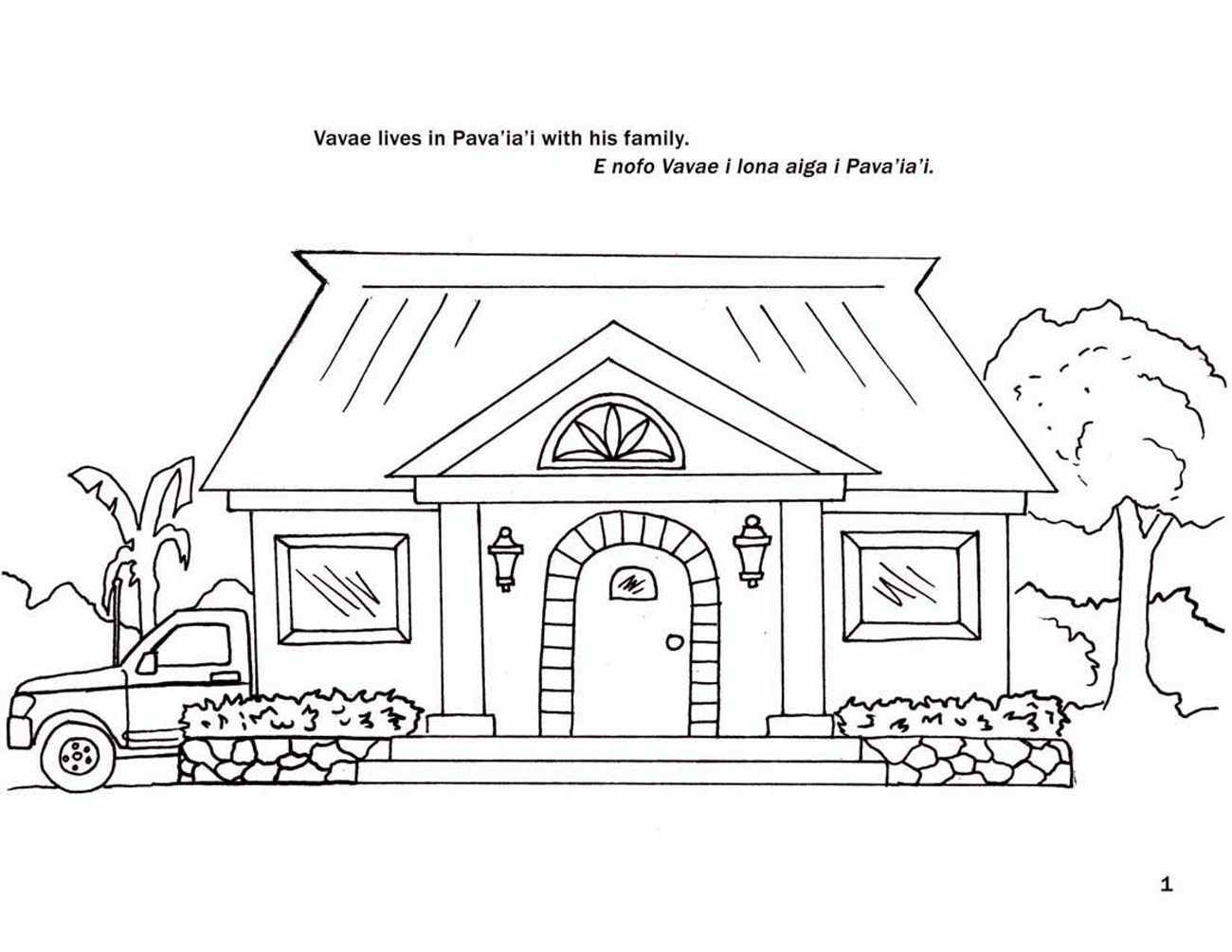
Text:
Vavae lives in Pava'ia'i with his family.
E nofo Vavae i Iona aiga i Pava'ia'i.
Image description:
A door is centered on the front facade of a single-story home. A vehicle is parked on the left and there are trees in the background.
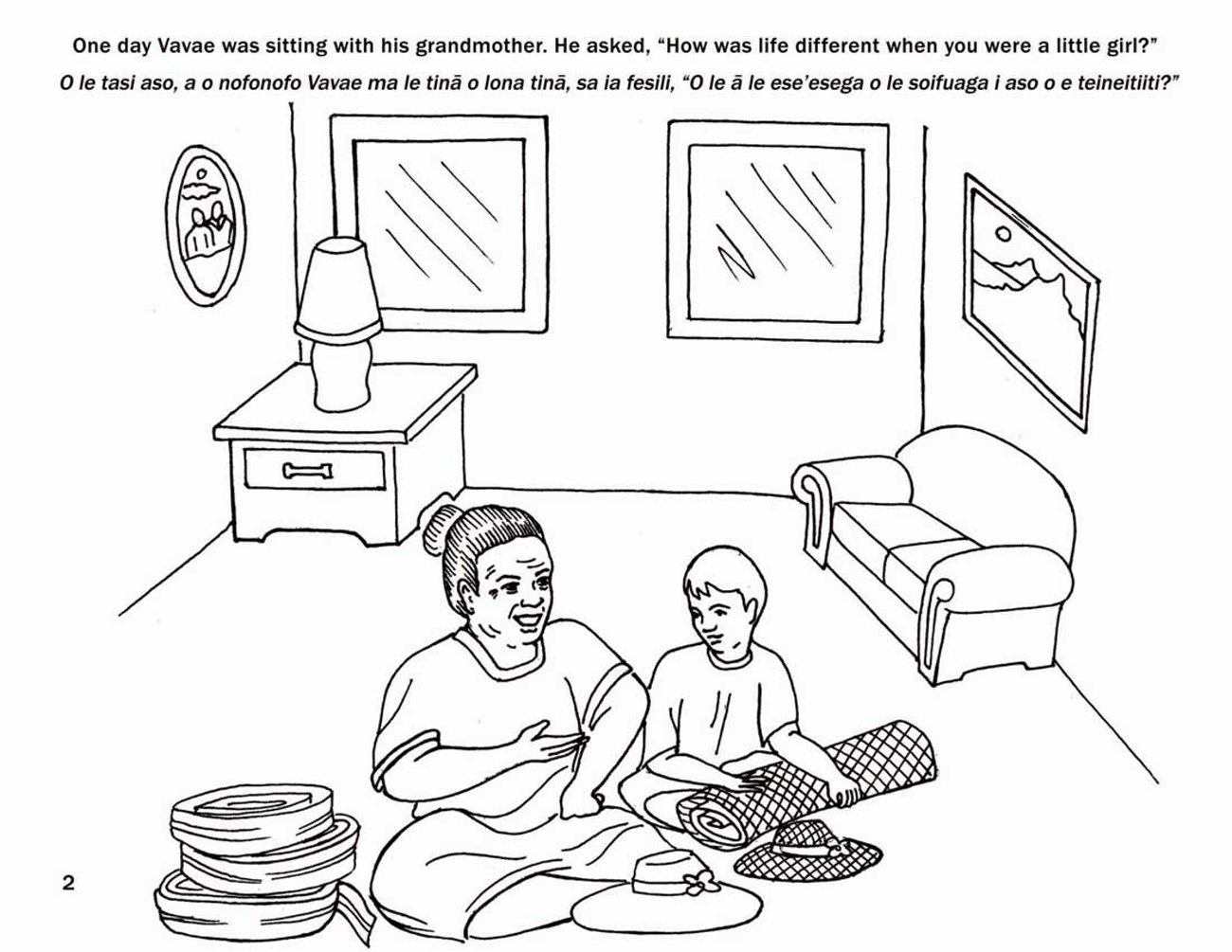
Text:
One day Vavae was sitting with his grandmother. He asked, "How was life different when you were a little girl?"
O le tasi aso, a o nofonofo Vavae ma le tinā o Iona tinā, sa ia fesili, “O le ā le ese'esegao le soifuaga I aso o e teineitil ti?"
Image description:
A woman and child sit on the floor of a living room. A couch is on the right and a lamp sit on a small one drawer side table on the left.
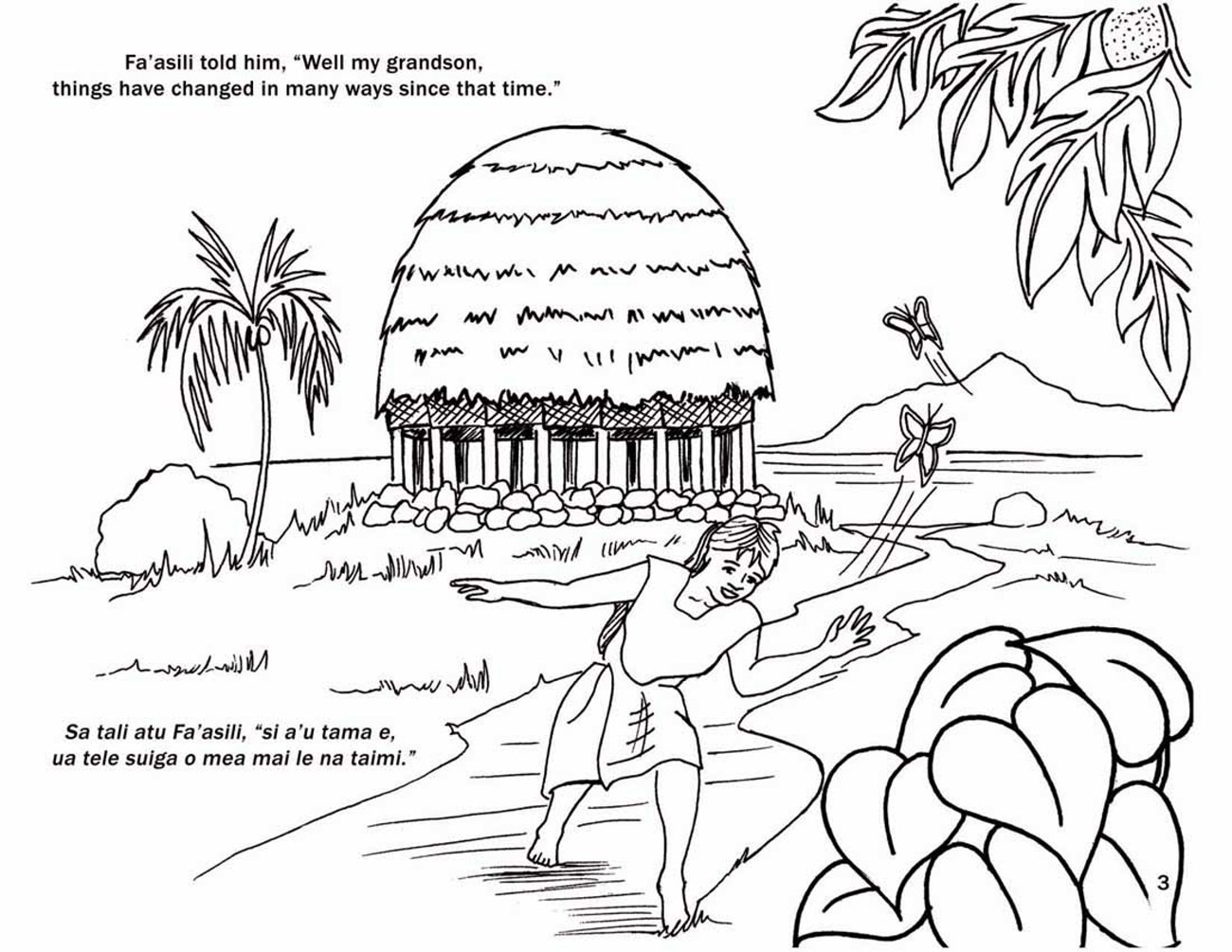
Text:
Fa'asili told him, "Well my grandson things have changed in many ways since that time.”
Sa tali atu Fa'asili, "si a'u tama e, ua tele suiga o mea mai le na taimin.”
Image description:
Two butterflies fly behind a young girl running on a path in front of a domed hunt on elevated on pillars.
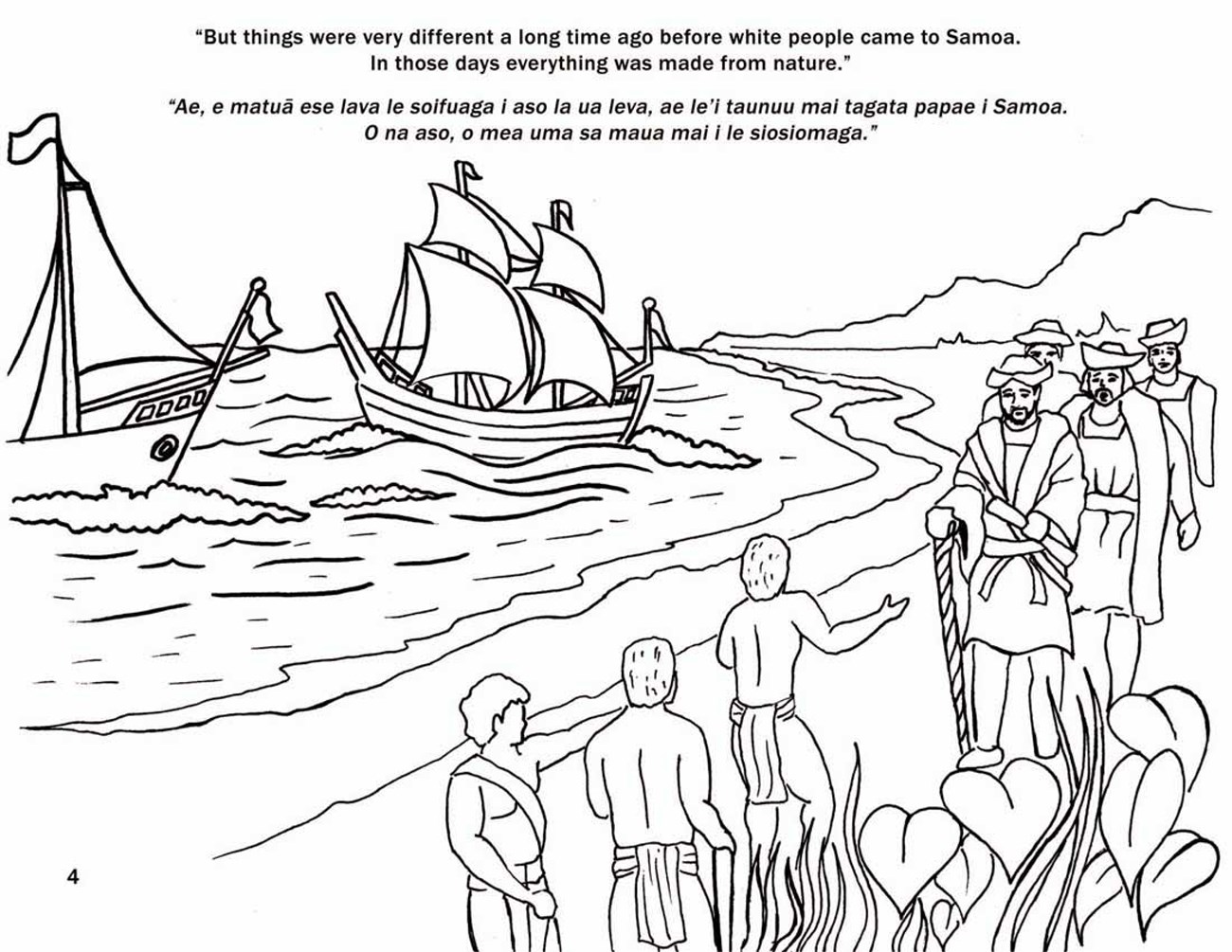
Text:
"But things were very different a long time ago before white people came to Samoa. In those days everything was made from nature."
"Ae, e matuā ese lava le soifuaga i aso la ua leva, ae le'i taunuu mai tagata papae i Samoa. O na aso, o mea uma sa maua mai i le siosiomaga.”
Image description:
Two large sailboats float on the water on the left. On the right four men walk up the beach toward three men wearing loin cloths.
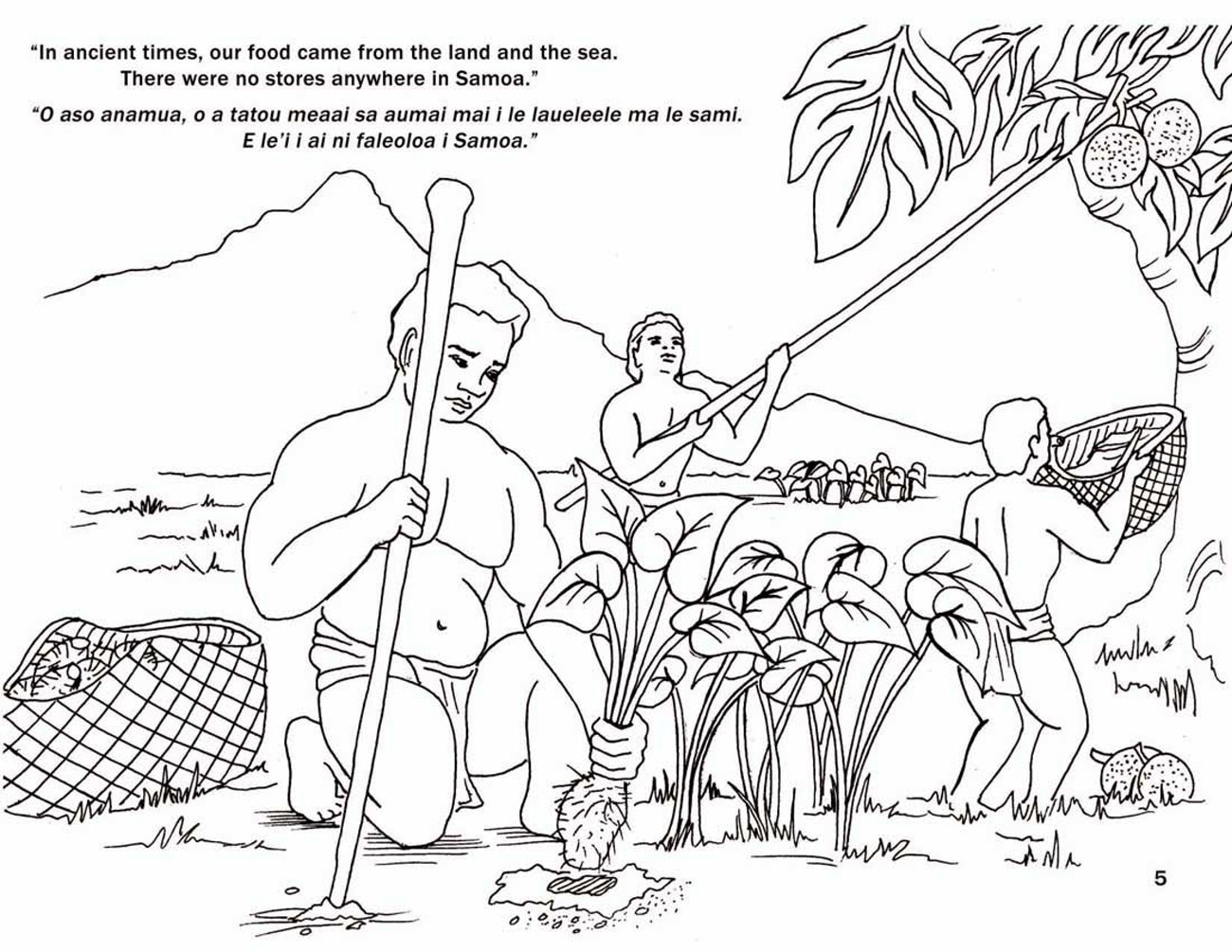
Text:
“In ancient times, our food came from the land and the sea. There were no stores anywhere in Samoa.”
"O aso anamua, o a tatou meaai sa aumai mai i le laueleele ma le sami. E le' i i ai ni faleoloa i Samoa."
Image description:
Three people gather food – one pulling a plant from the ground and two men work together to pick fruit high in a tree.
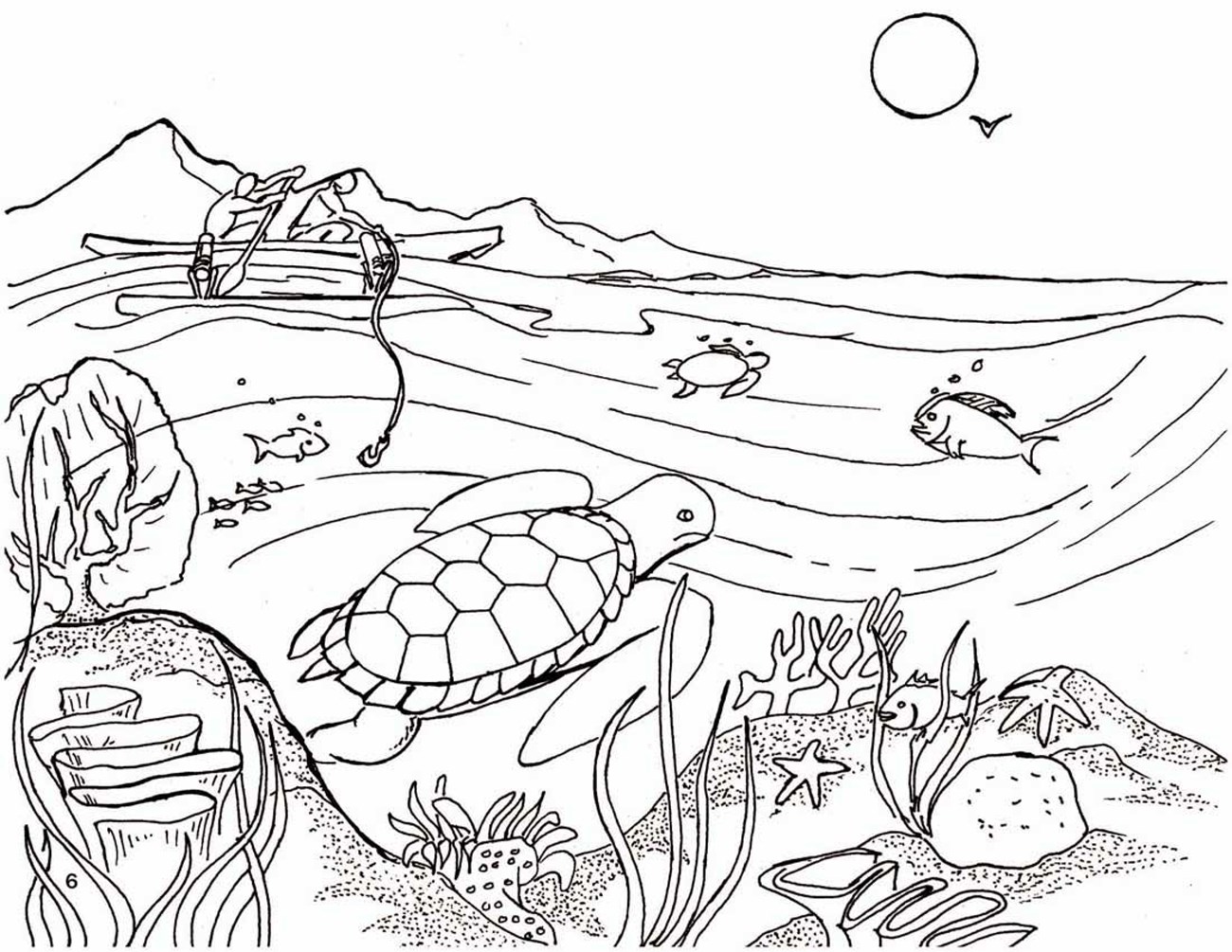
No Text
Image description:
A turtle and several fish swim underwater while two men in a boat fish on the left.
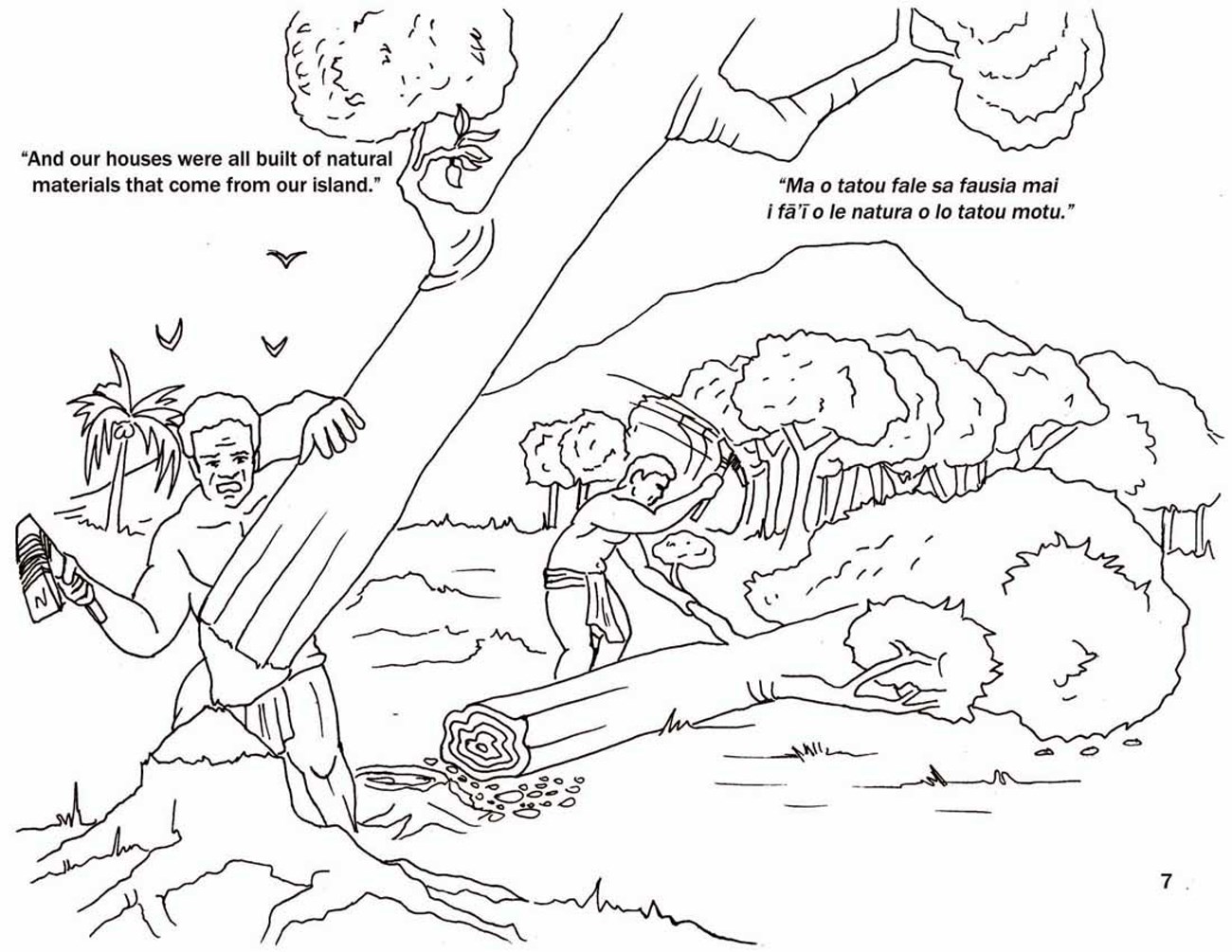
Text:
“And our houses were all built of natural materials that come from our island.”
“Ma o tatou fale sa fausia mai i fā’ī o lo tatou motu.”
Image description:
One man chops down a tree while another removes a branch from a felled tree. A small forest is in the background.
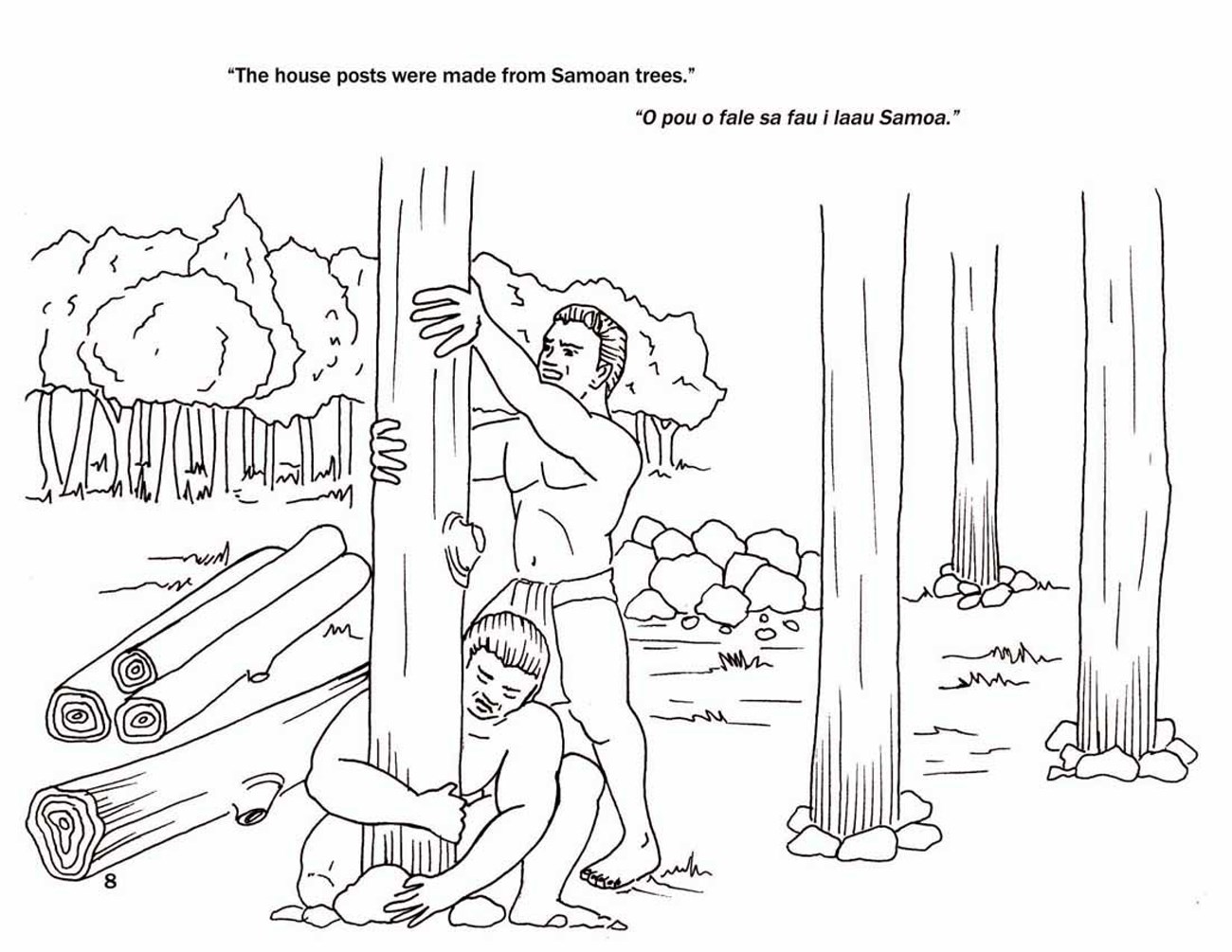
Text:
"The house posts were made from Samoan trees."
“O pou o fale sa fau i laau Samoa.”
Image description:
Two me work together setting a post. Three other posts are on the right. Four posts lay on their sides on the left and there is a grove of tree in background.
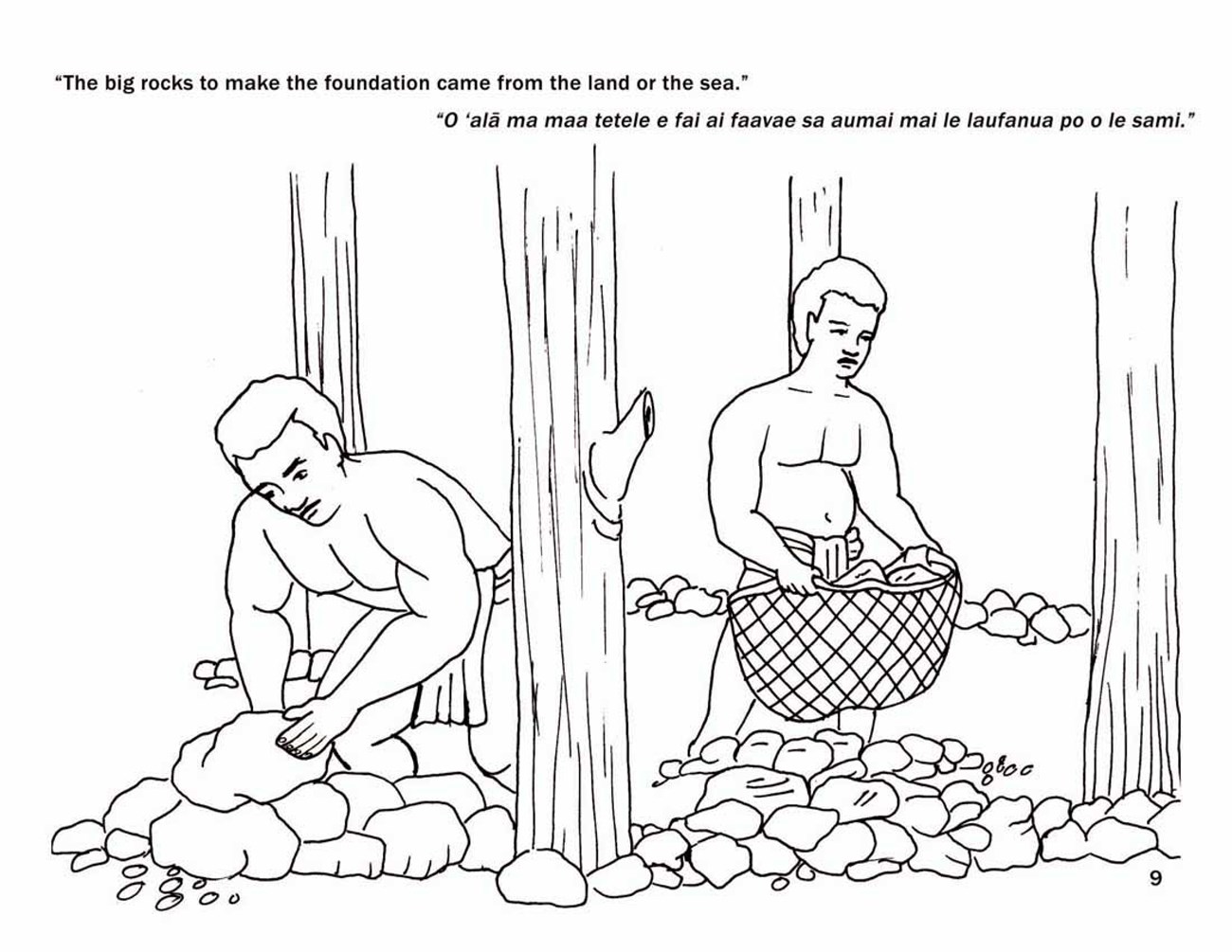
Text:
"The big rocks to make the foundation came from the land or the sea."
“O 'alā ma maa tetele e fai ai faavae sa aumai mai le laufanua po o le sami.”
Image description:
Two men place rocks around the base of four posts.
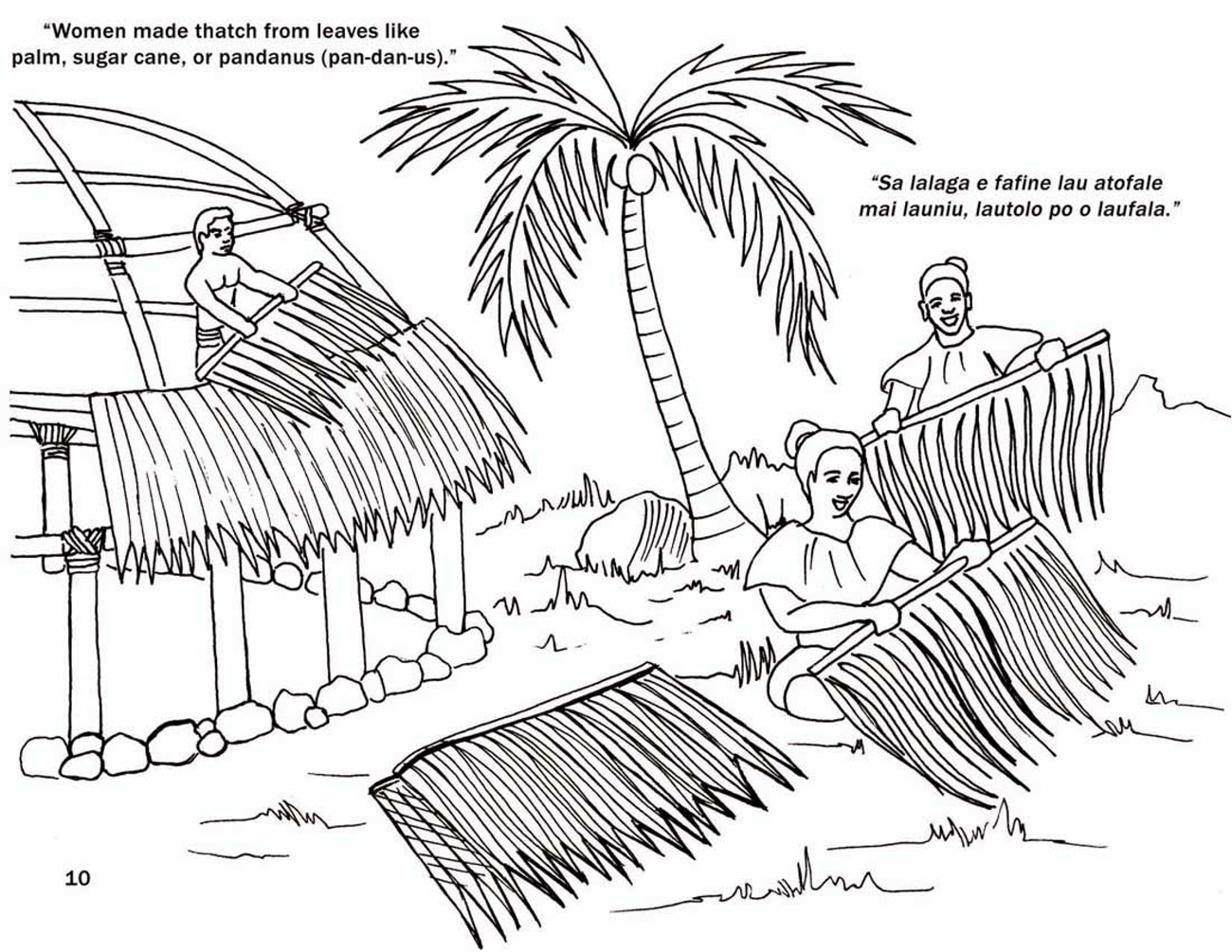
Text:
“Women made thatch from leaves like palm, sugar cane, or pandanus (pan-dan-us).”
“Sa lalage e fafine lau atofale mai launiu, lautolo po o laufala.”
Image description:
One person on the right places thatch on the roof of a hut. On the right two smiling women make thatch on a rod.
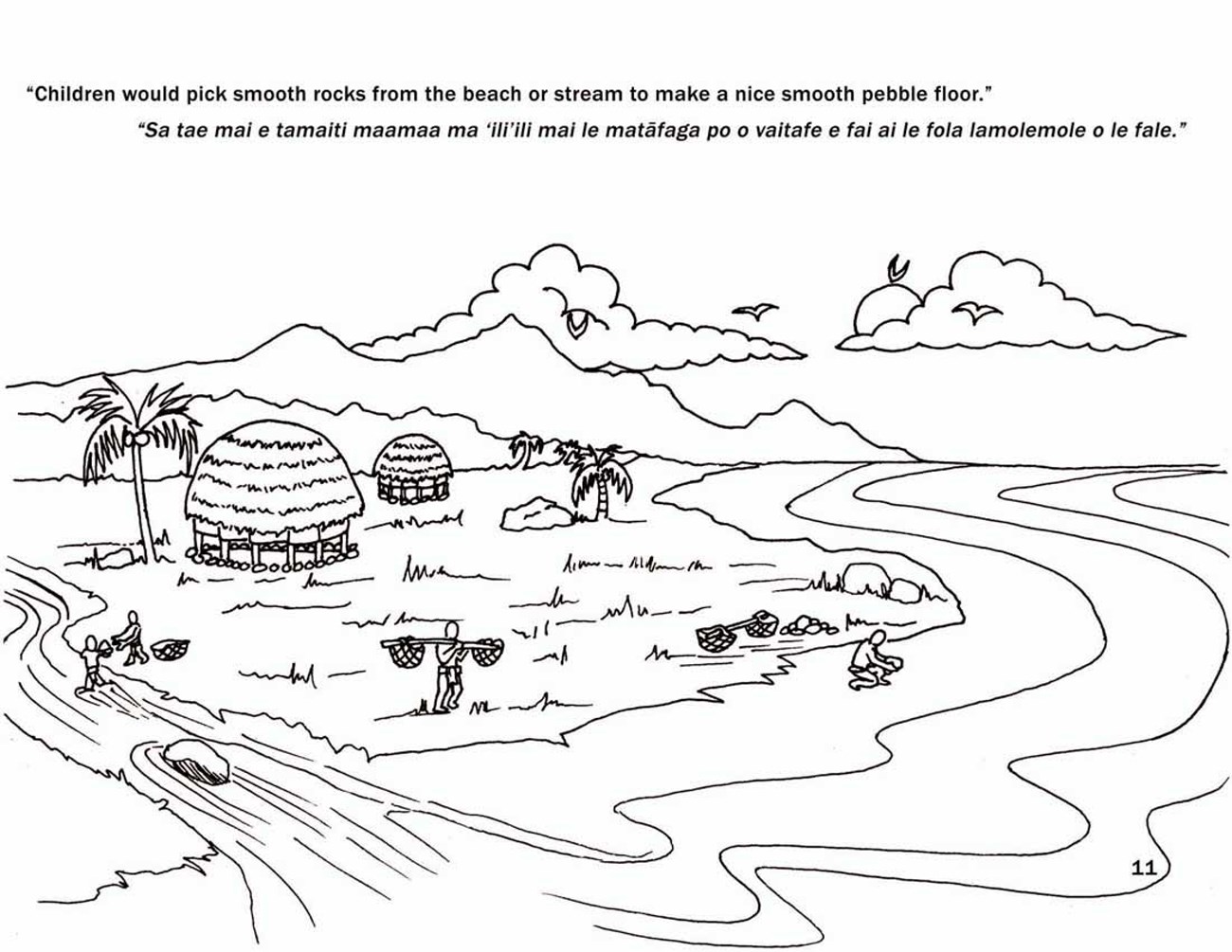
Text:
“Children would pick smooth rocks from the beach or stream to make a smooth pebble floor.”
“Sa tae mai e tamaiti maamaa ma 'ili’ili mai le matāfaga po o vaitafe e fai ai le fola lamolemole o le fale.”
Image description:
A stream on the right flow into the ocean in the foreground. Two huts in and hills are in the background.
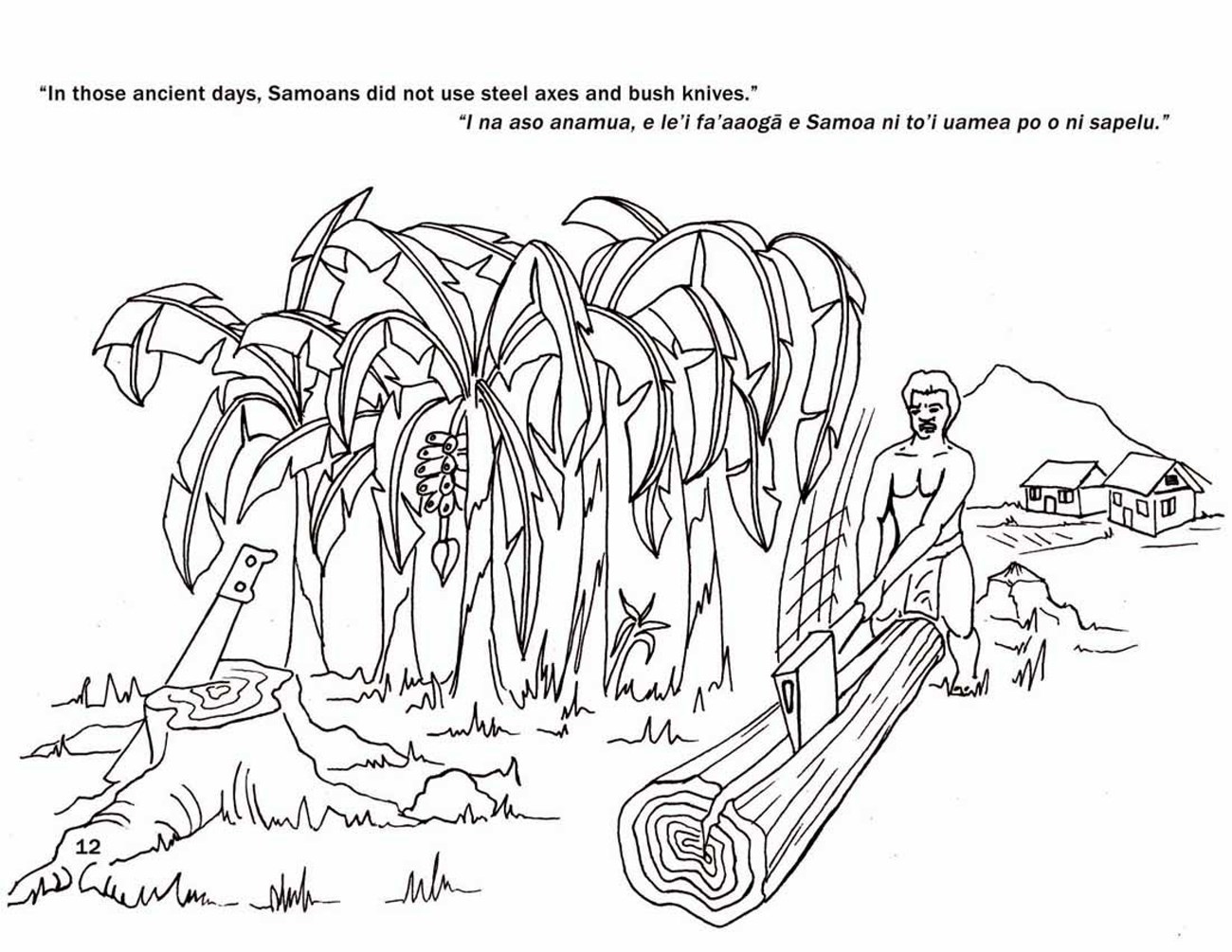
Text:
"In those ancient days, Samoans did not use steel axes and bush knives."
"I na aso anamua, e le'i fa'aaogā e Samoa ni to'i uamea po o ni sapelu.”
Image description:
On the left a large bush knife rest in a stump. A man uses an axe to split a log on the right next to a grove of trees. Two houses are in the background.
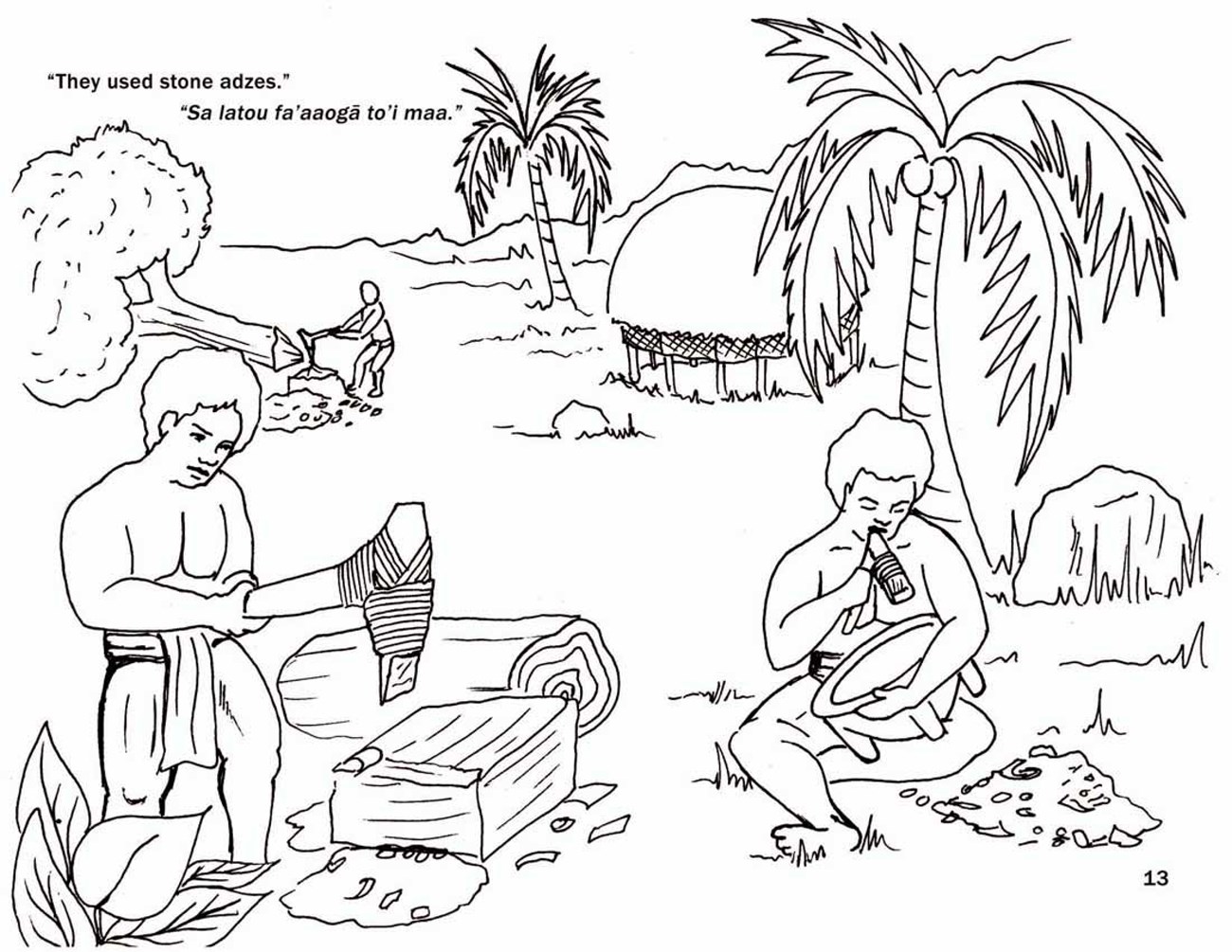
Text:
“They used stone adzes.”
“Sa latou fa'aaogā to'i maa.”
Image description:
In the background a man is using an adze to cut down a tree on the right and a hunt is on the right. In the foreground on the right a man is using an adze shaping a log and another is carving a bowl.
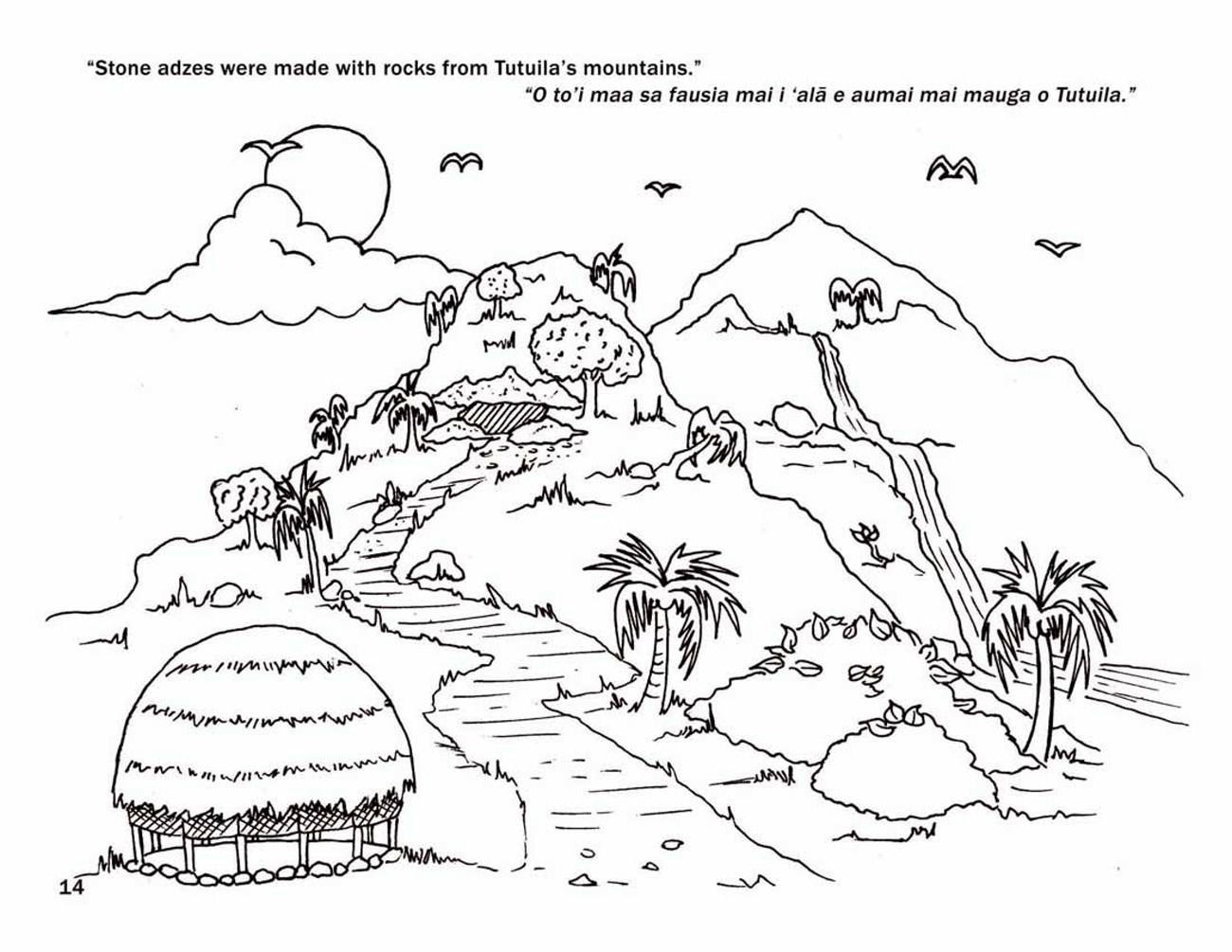
Text:
“Stone adzes were made with rocks from Tutuila's mountains.”
“O to'i maa sa fausia mai i 'alā e aumai mai mauga o Tutuila.”
Image description:
A hut is on the left in the foreground next to a path leading to the mountains. A stream flows down the hillside on the right.
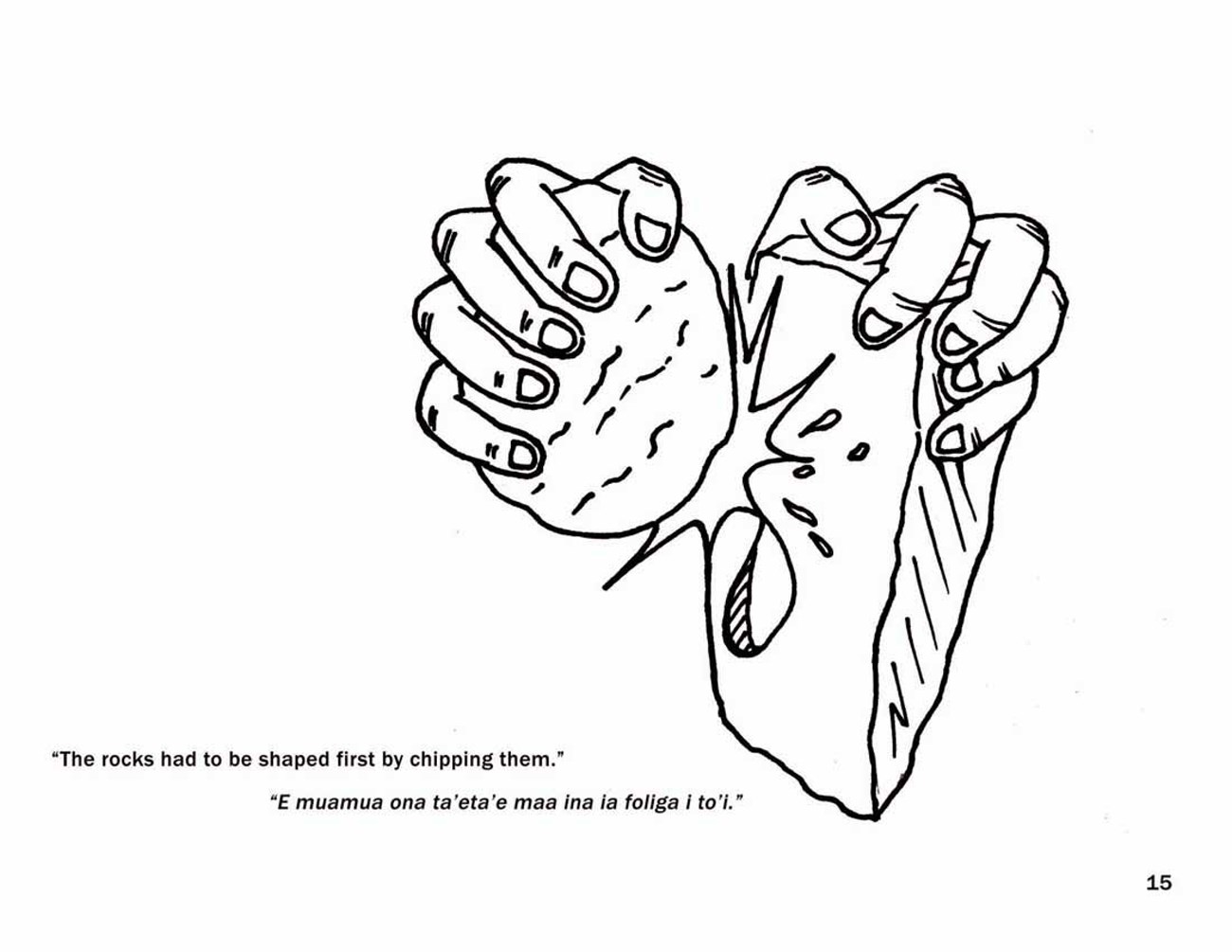
Text:
The rocks had to be shaped first by chipping them.
“E muamua ona ta'eta'e maa ina ia foliga i to'i.”
Image description:
Hands using a rock to shape another rock into a blade shape.
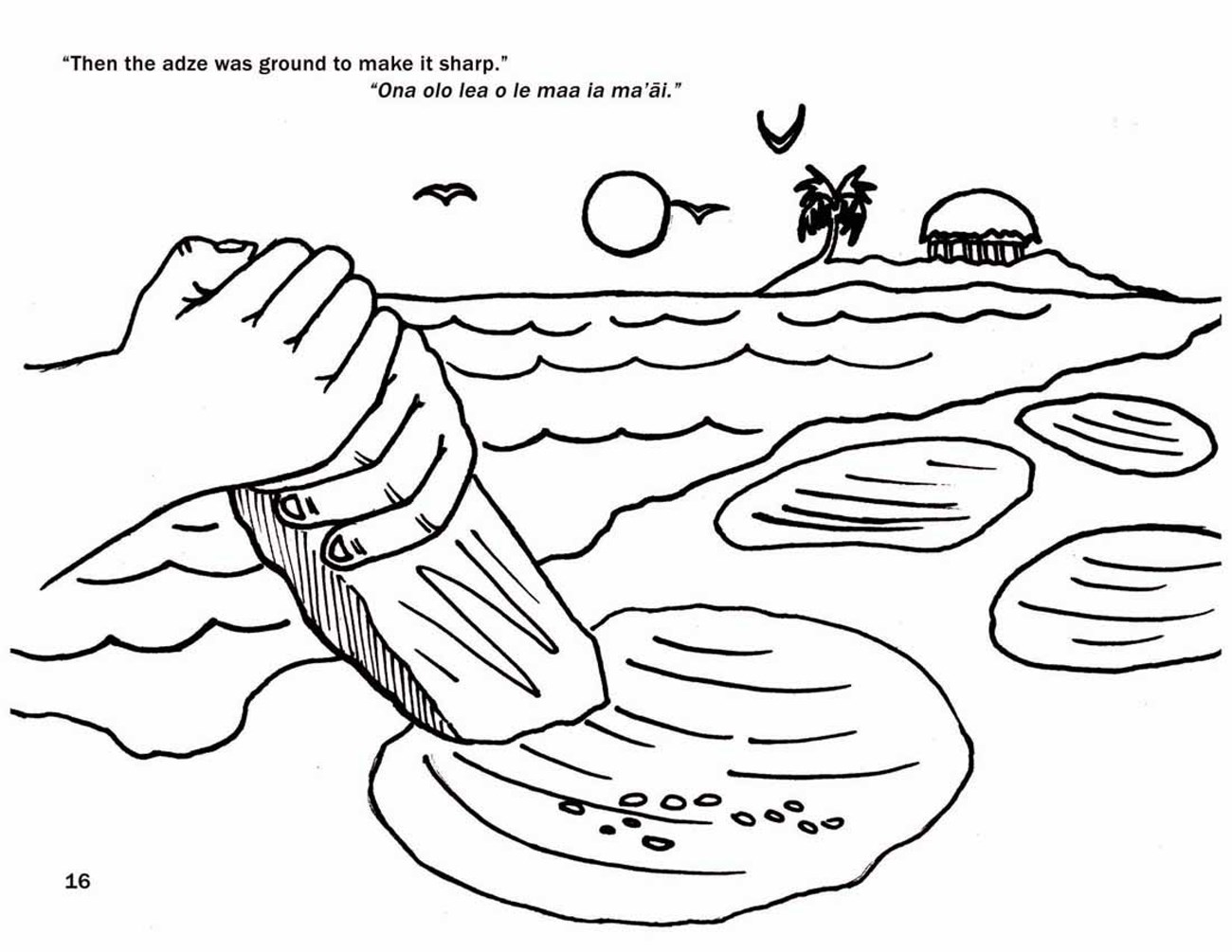
Text:
“Then the adze was ground to make it sharp.”
“Ona olo lea o le maa ia ma'ā i.”
Image description:
Two hands holding an adze blade against another stone on a beach. A hunt and tree and birds flying are seen on the horizon.
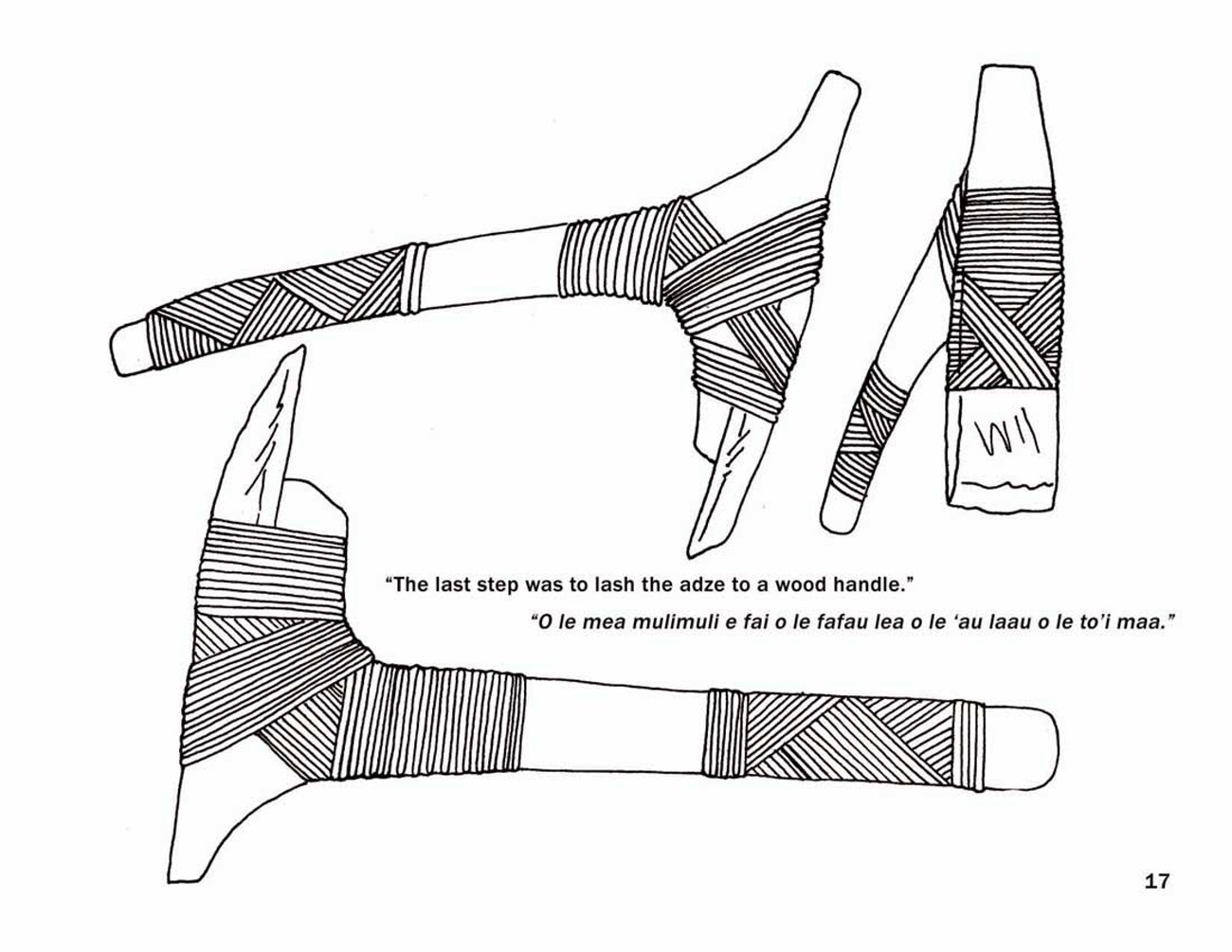
Text:
“The last step was to lash the adze to a wood handle.”
“O le mea mulimuli e fai o le fafau lea o le 'au laau o le to'i maa.”
Image description:
Three views adzes: two in the sides and one from looking down from the top.
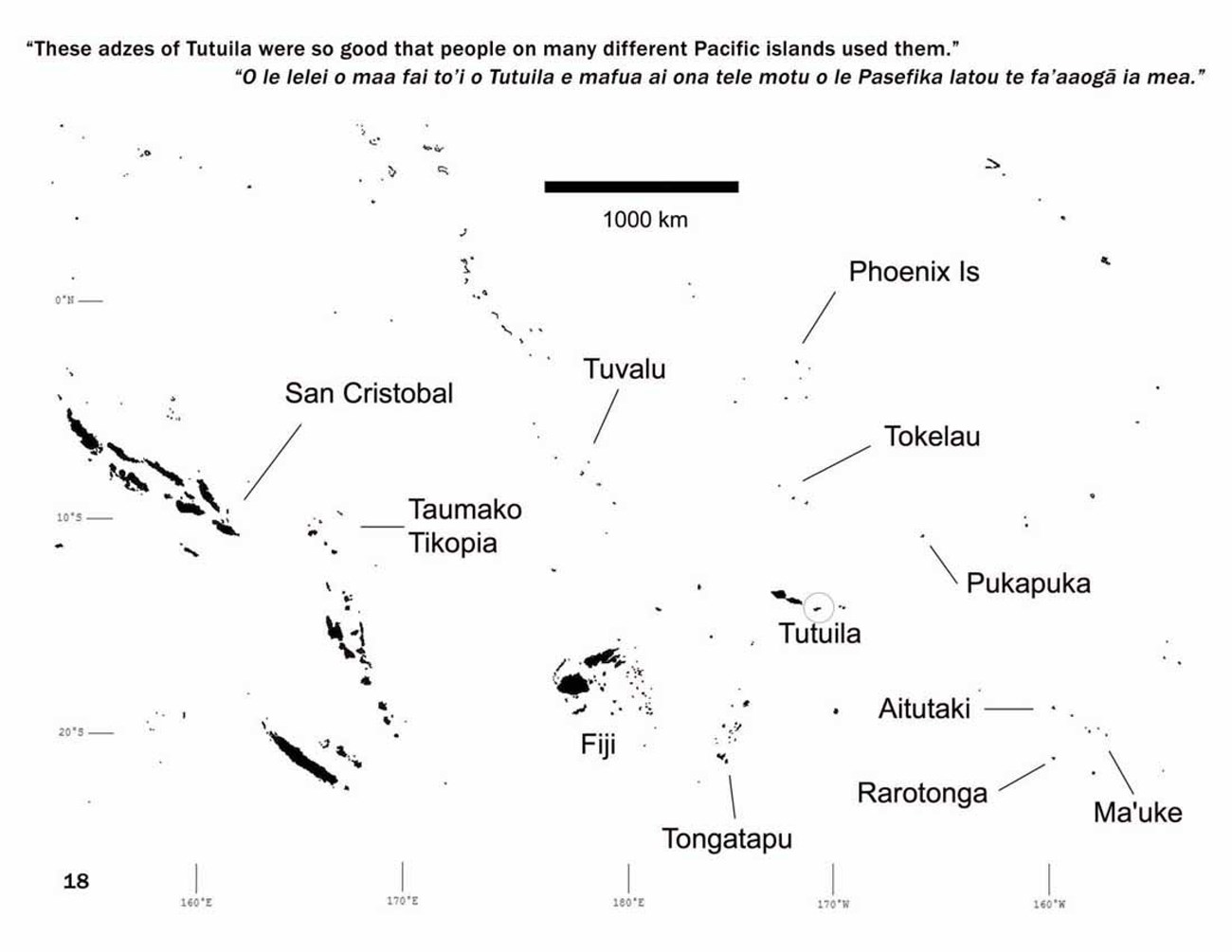
Text:
“These adzes of Tutuila were so good that people on many different Pacific islands used them.”
“O le lelei o maa fai to'i o Tutuila e mafua ai ona tele motu o le Pasefika latou te fa'aaogā ia mea.”
Image description:
Map of the Pacific islands from left to right San Cristobal, Taumako Tikopia, Tuvalu, Fiji, Tongatapu, Phoenix Is, Tokelau, Tutuila, Pukapuka, Aituaki, Rarotonga, Ma’uke. Tutuila is in the center and a circle is drawn around one of its islands.
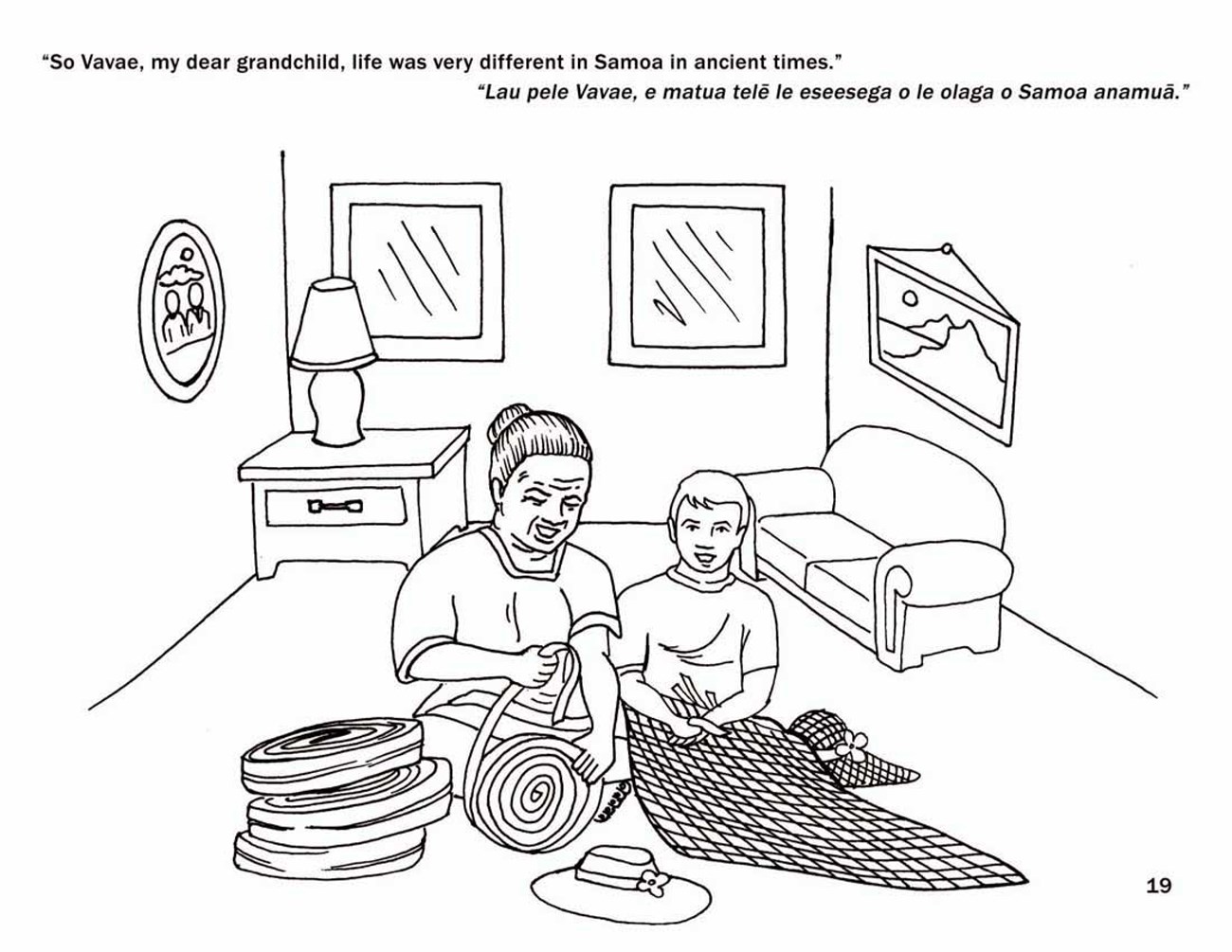
Text:
“So Vavae, my dear grandchild, life was very different in Samoa in ancient times.”
"Lau pele Vavae, e matua telē le eseesega o le olaga o Samoa anamuā.”
Image description:
A woman and child sit on the floor of a living room. A couch is on the right and a lamp sit on a small one drawer side table on the left.
A publication of The Samoan Studies Institute, American Samoa Community College
Copyright© 2009 Samoan Studies Institute, American Samoa Community College
Text by David Addison and Okenaisa Fauolo-Mani la Illustrations and cover design by Patrick Mafoe Layout and book design by Brown Wing Studio
1st Edition printing funded by ASCC Teachers Education Department
Coloring pages describing ancient Samoan life.
Published by: Samoan Studies Institute
American Samoa Community College Pago Pago, AS 96799
USA
ISBN 978-0-9818524-5-4
